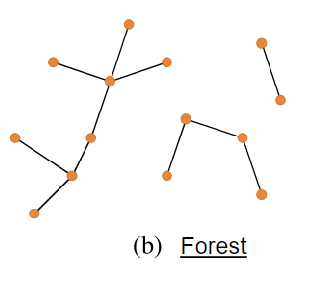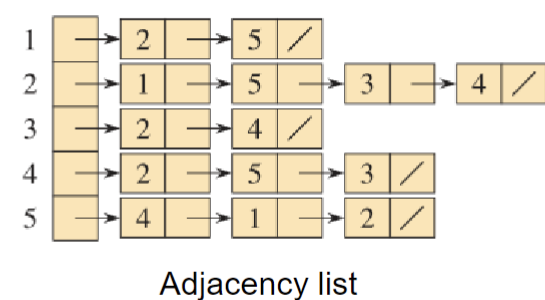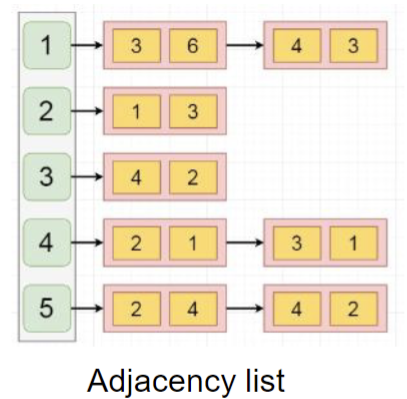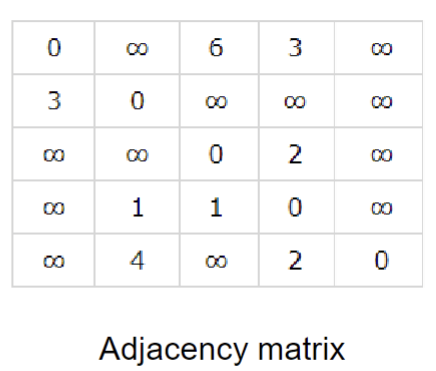Overview
Graphs represent a set of objects (vertices) where some objects are connected (edges). Graphs have many uses in computer science.
There are two basic types of graphs. directed and undirected graphs.
Types
Directed Graphs
Also known as digraphs, these are graphs where edges are one-directional. This means that an edge pointing from
Undirected Graphs
These are graphs where edges are bi-directional. This means an edge from (
Weighted Graphs
Weighted graphs can be both directed or undirected. They simply assign a value to each edge of the graph. This can be used to find optimal paths through a graph.
DAG
A Directed acrylic graph (DAG) is a directed graph with no cycles.
DAG's can be topologically sorted.
Topological Sort
A topological sort is a linear ordering of all the vertices in a DAG such that if it contains an edge
It is useful for sequencing tasks with dependency constraints.
This is not a comparison based sort and specifically applies to DAGs. When a graph contains a cycle no linear ordering is possible.
Using DFS can perform topological sort in
Trees
Free Tree
A free tree is a graph with the following conditions met:
- Undirected
- Connected
- Acyclic (not cyclic)

A free tree with a designated root node is called a rooted tree.
The following properties are found in free trees:
- Any two vertices are connected by a unique simple path
- The number of edges is one less than the number of vertices
- If any existing edge is removed, the resulting graph will be disconnected.
- If any new edge is added between two vertices, the graph will contain a cycle
Forests
A forest meets most of the same conditions as a free tree, except that it is disconnected (i.e. the number of #Connected Components > 1).
- Undirected
- Disconnected (connected components > 1)
- Acyclic (not cyclic)

Spanning Tree
For a connected undirected graph, its spanning tree is a free tree that contains:
- All the vertices in the graph
- Edges in the tree are a subset of all the edges in the graph
i.e. Let a graph
Minimum Spanning Tree
A minimum spanning tree (MST) can only exist on a weighted graph and is a spanning tree with the least total cost (weight) in the set of its edges.
The MST of a weighted graph may not be uniuque.
Representations
There are two standard ways to represent graphs which apply for both #Directed Graphs and #Undirected Graphs. Each method has its own upsides and downsides.
- Collection of Adjacency lists
- Good way to represent a #Sparse Graph.
- Common method of choice
- Adjacency matrix
- Good way to represent a #Dense Graph.
- Also good for quickly checking if an edge connects two given vertices.
- Used when there are a large number of vertices and edges.
Adjacency List
This consists of a collection of lists where each index, key, etc. corresponds with a linked-list which contain each adjacent vertex node.
A collection can be a hash map, array, or even another linked-list.

For weighted graphs we can just add the weight next to the adjacent vertex in each list.

Adjacency matrix
This consists of an
i.e where A is the matrix, and E represents the edges in a graph.

For weighted graphs we just relace the value at the entry representing each edge with the corresponding weight. All other values are infinite.

Definitions
Adjacency
Adjacency is defined as any vertex (b) connected to a given vertex (a).
For directed graphs adjacency is not necessarily symmetric. This means if an edge from (
For undirected graphs adjacency is symmetric. This means if an edge exists from (
Degree
The degree of a vertex is the number of edges connecting it to or from other vertices in a graph.
For directed graphs there are three different classifications of degrees, in-degree, out-degree and total-degree.
The in-degree is defined as the number of edges that point to the vertex. The out-degree is defined as the number of edges that point out of the vertex. The total-degree is the sum of the in-degree and out-degree
For undirected graphs the degree is just the number of edges that connect the given vertex to another vertex.
Sparse Graph
A graph in which the number of edges are considerably smaller than the maximum number of potential edges.
i.e.
Dense Graph
A graph in which the number of edges are very close to the maximum number of potential edges.
i.e.
Path
A path in a directed graph is a sequence of vertices,
Cycle
A cycle is a path
Connected Components
In an undirected graph a connected component is a subset of all the vertices in a graph where all the vertices in the graph are connected by a #Path.
If a graph only has one connected component it is said to be a connected graph.
Finding connected components is useful for identifying clusters of connections in a graph.
Implementations
The first method is to use a graph searching algorithm like DFS or BFS. This will find all the connected components for a given vertex, but to find all connected component we have to search through all the vertices.
The second method is to use a disjoint set. This makes a new set for each vertex and unions all the adjacent vertices for each vertex. This will create the final connected components for the entire graph.
Path Weight
This is the sum of the weight of all the edges in a path.
Reference
- Sun, Hongyang Various lectures The University of Kansas 2024